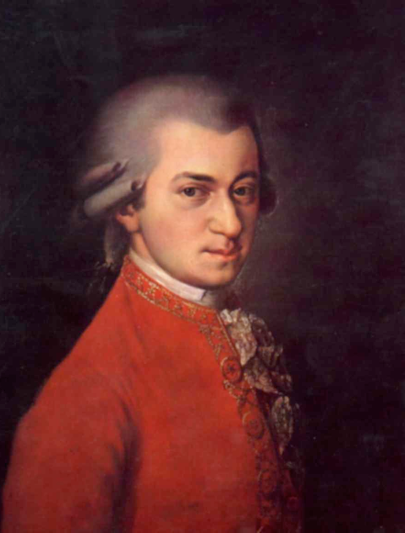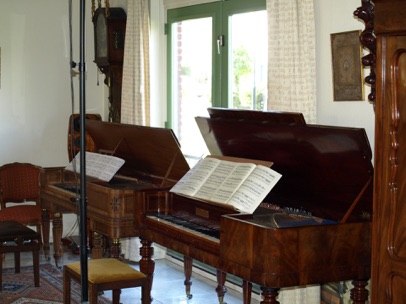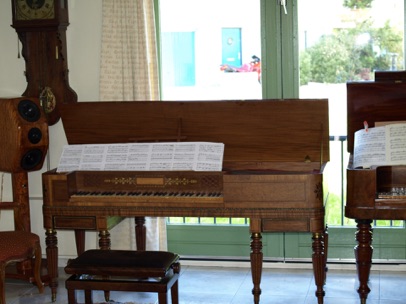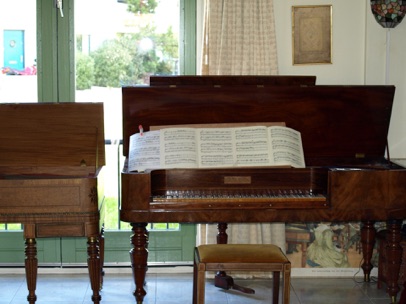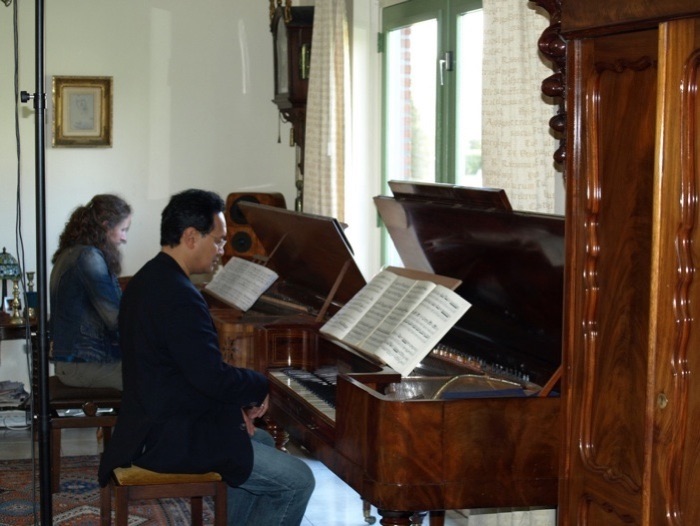WOLFGANG AMADEUS MOZART
Mozart was born on January 27, 1756, in Salzburg and died on December 5, 1791 in Vienna. Mozart wrote his Sonata for Two Pianos in D major, K. 448 in 1781, when he was 25 years old.
Instrumentation: 2 pianos
Mozart reserved the key of D major for happy compositions usually calling for a degree of virtuosity, as may be easily heard in his Sonata for two pianos. This is a work in the galant style, light, brilliant, yet refined. Mozart wrote it for a performance he would give with Josephine von Aurnhammer, who also appeared with him in his Concerto for two pianos and orchestra. This two-piano sonata is clearly meant for public use, rather than as a teaching tool like his pieces for four hands at a single keyboard.
The opening Allegro con spirito begins with a trilling fanfare, then immediately launches into a quick, bubbling theme, followed by a somewhat more chordal, low-key, second subject adorned with witty grace notes; a third section returns to the spirit and technique of the first part, but without quite quoting the earlier material until the very end. These are the building blocks of the sonata-form movement, which, after an exposition repeat, launches the development section with a descending version of the opening fanfare, sounding like the subject of a fugue. Mozart never really embarks on counterpoint, though, and after a very few bars he moves impatiently to the recapitulation.
The Andante begins with a seemingly simple yet highly adorned melody and flowing accompaniment that might serve nicely as an aria or duet in The Magic Flute or Cosí fan tutte. The theme of the middle section in this ABA movement is more spare, almost a lullaby. A quiet, tinkling delicacy pervades most of this movement, particularly upon the return of the A section, after a transition that is almost substantial enough to serve as yet another section.
Finally, the Molto allegro movement leaps off the page with a spirited tune that might be called galloping if it weren't so elegant. This is the recurring theme that binds together a rondo featuring an assortment of highly contrasting melodies, one of which – heard early on and returning at the end – includes a Turkish-style cadence that calls to mind Mozart's famous Rondo alla turca.

